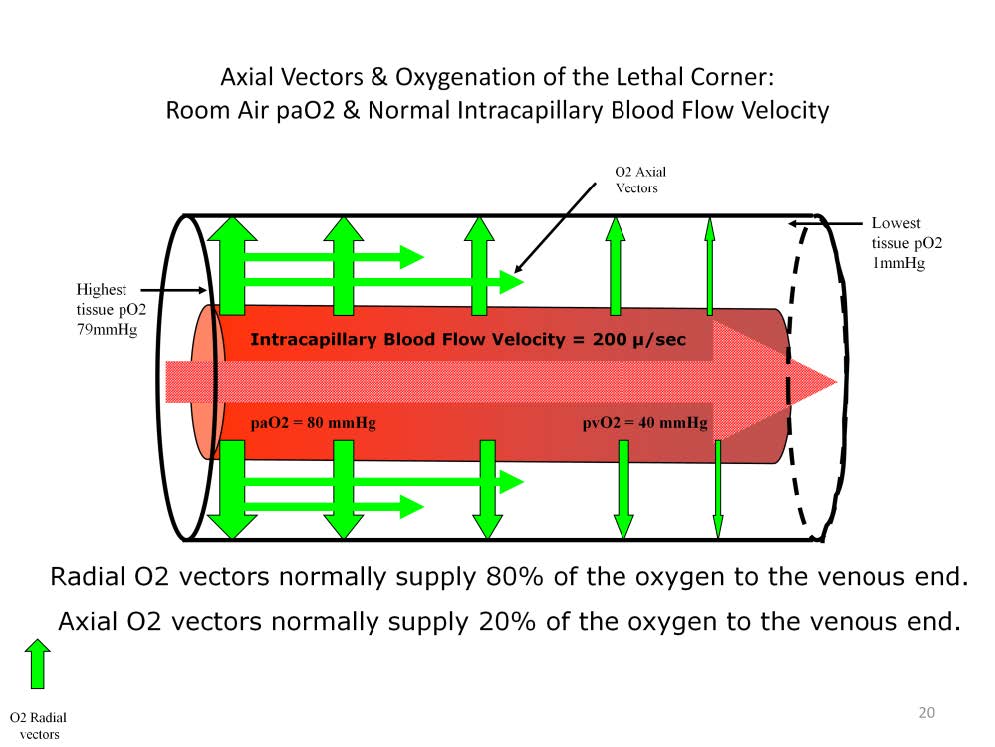
Axial oxygen vectors normally supply about 20% of the oxygen needs of the venous-end tissues.
Another aspect of OPFT that is important to perfusionists is the presence of axial oxygen vectors and gradients. Radial vectors radiate at right angles from the central axis of the capillary. Axial vectors run parallel to the axis of the capillary within the substance of the tissue sleeve. In a healthy patient most of the oxygen that enters the tissues moves along radial vectors between the blood in the capillary and the tissues. But as discussed earlier, there is more oxygen in the arterial-end tissues of the cylinder than in the venous-end tissues. As a result, oxygen flows from the arterial-end tissues towards the venous-end tissues along vectors outside of but parallel to the axis of the capillary; axial vectors. Normally only 20% of the oxygen entering the venous-end tissues comes from axial vectors while 80% comes from radial vectors. The magnitude of the axial gradient depends on the difference in tissue oxygen concentration between the arterial-end tissues and the venous-end tissues.

Perfusion Theory is an educational platform for the Oxygen Pressure Field Theory (OPFT). August Krogh’s theoretical concept of the oxygen pressure field is explained and then applied to clinical applications in perfusion practice.